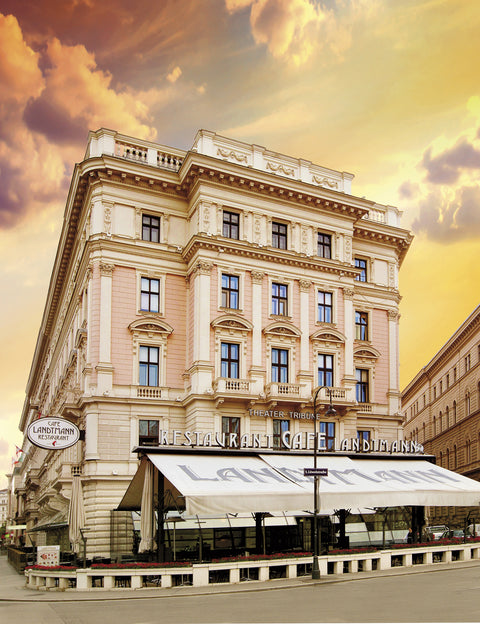
Except for a very few days a year, it is dark when master confectioner Viola Plundrak crosses the car park in Vienna-Liesing at around four in the morning.
The first lights slowly come on in the neighbouring residential buildings and the first bright windows look like the blinking eyes of a sleepy city. On entering the factory, the 35-year-old is greeted by the warm, slightly sweet smell of yeast, as the dough for Landtmann's brioche croissants was prepared the day before and placed on the tray in the shape of a crescent moon. "With enough space, of course, so that they don't grow into giant crescents as they rise overnight," says the pastry chef. First, the yeast dough croissants are placed in one of the three ovens, each of which can hold 75 Sachertorten at a time. It's important not to dawdle too much, because at seven o'clock the three delivery vans arrive to chauffeur the fresh baked goods to Landtmann and the other family businesses.

As Vienna steadily awakens, the bakery fills with life; a total of 50 pastry chefs and apprentices are employed in the bakery. To the drone of the radio music and the hum of the machines, the focus shifts from the morning desserts to the impressive cakes and succulent pastries.
The room smells of chocolate, warm dough and the buttery vanilla flavour of the Guglhupf, 300 of which are produced every day. This pastry is only surpassed by the apple strudel, which is the most-ordered Landtmann dessert with 500 pieces.
Was she very excited? Viola thinks for a moment. "Well, you always take one step at a time - and you're not alone at first." And she already knew as a child that she wanted to be a pastry chef. "We always baked at home." She has particularly fond memories of Christmas biscuits: the warmth of the kitchen in contrast to the cold winter air, the smell of vanilla sugar and spending time with her grandma. "And the nice thing is that there is always that sense of achievement when baking." That moment of amazement when you take the finished dish out of the oven, which is so completely different from the individual ingredients used to create it.
The most impressive transformation of ingredients into the end product is probably Landtmann's fine cake with its nine layers. The hazelnut sponge base is baked first, followed by alternating layers of orange marzipan and hazelnut buttercream until the cake is finished off with red marzipan. And how difficult is it not to keep snacking with so many sweet ingredients? Viola laughs.
"People always snack. But you become more selective. And more varied." But cost is also part of the job. "We change our menu twice a year." In spring and summer, the desserts are fruitier, in autumn and winter there is a focus on nuts, chocolate and chestnuts. The first ideas are discussed three months before the products appear on the menu. Once an agreement has been reached, the next step is, of course, baking trials and lots of tasting. So that it tastes right when it is served to the guests.
AND WHICH PRODUCT IS THE MOST COMPLICATED?
After 20 years, Viola Plundrak is actually experienced in the preparation of all cakes, strudels and tarts. However, the legendary Landtmann's Original Erdbeerstanitzel is particularly delicate, as each strawberry in the fruity pastry has to be placed individually. Incidentally, it was precisely this product that she prepared as a 15-year-old on her first day as an apprentice at Landtmann's Original Manufaktur.


